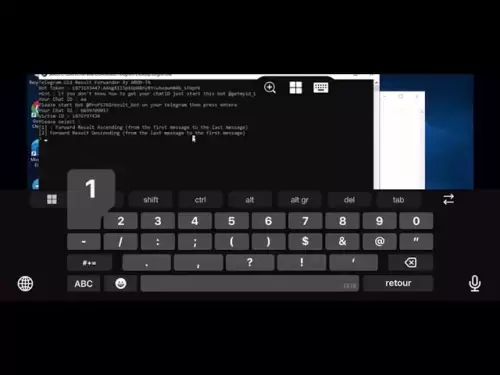-
 Bitcoin
Bitcoin $107,337.4054
-1.63% -
 Ethereum
Ethereum $2,647.1005
-0.75% -
 Tether USDt
Tether USDt $1.0001
-0.02% -
 XRP
XRP $2.2590
-2.59% -
 BNB
BNB $686.9810
-0.28% -
 Solana
Solana $171.1956
-3.20% -
 USDC
USDC $0.9998
0.01% -
 Dogecoin
Dogecoin $0.2196
-3.19% -
 Cardano
Cardano $0.7418
-2.57% -
 TRON
TRON $0.2738
-1.17% -
 Sui
Sui $3.5695
-2.95% -
 Hyperliquid
Hyperliquid $33.6011
-6.91% -
 Chainlink
Chainlink $15.5183
-2.55% -
 Avalanche
Avalanche $23.2215
-0.59% -
 Stellar
Stellar $0.2826
-1.89% -
 UNUS SED LEO
UNUS SED LEO $9.0794
-0.02% -
 Shiba Inu
Shiba Inu $0.0...01415
-2.19% -
 Toncoin
Toncoin $3.3190
10.19% -
 Bitcoin Cash
Bitcoin Cash $411.4902
-1.16% -
 Hedera
Hedera $0.1837
-2.82% -
 Litecoin
Litecoin $95.0625
-0.99% -
 Polkadot
Polkadot $4.5044
-0.94% -
 Monero
Monero $342.4378
-9.41% -
 Bitget Token
Bitget Token $5.2289
-2.25% -
 Pepe
Pepe $0.0...01381
-0.72% -
 Dai
Dai $0.9997
-0.02% -
 Pi
Pi $0.7272
-3.28% -
 Ethena USDe
Ethena USDe $1.0008
0.01% -
 Uniswap
Uniswap $6.6847
3.36% -
 Aave
Aave $262.1465
-4.38%
How to use KDJ after the bad news is exhausted? How to grasp the oversold rebound?
After bad news, use the KDJ indicator to spot oversold rebounds in crypto: watch for K and D lines below 20, J line rising, and confirm with RSI or MACD.
May 27, 2025 at 10:42 am
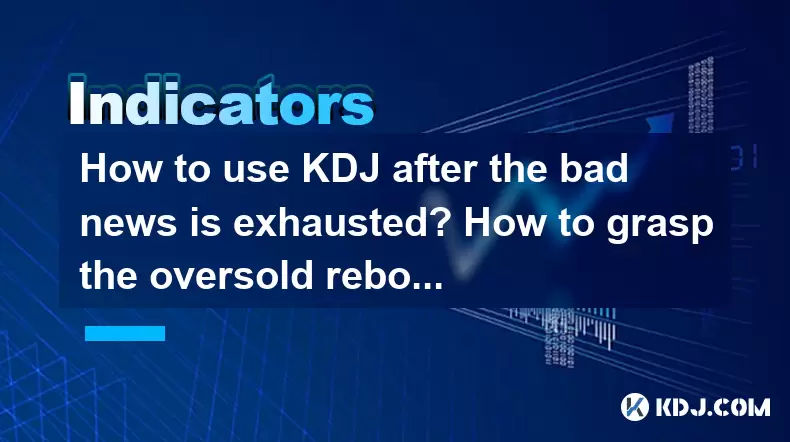
In the volatile world of cryptocurrencies, understanding how to leverage technical indicators like the KDJ (K, D, and J lines) can be crucial, especially after a period of bad news that has led to a significant market downturn. The KDJ indicator is a momentum oscillator that can help traders identify potential oversold conditions and subsequent rebounds. This article will explore how to effectively use the KDJ indicator after bad news has exhausted its impact and how to capitalize on oversold rebounds.
Understanding the KDJ Indicator
The KDJ indicator is a technical analysis tool that measures the momentum of a cryptocurrency's price. It consists of three lines: the K line, the D line, and the J line. The K and D lines are calculated based on the highest high and lowest low over a specific period, typically 9 days, while the J line is a more sensitive line that can signal potential trend reversals.
The KDJ indicator is particularly useful for identifying overbought and oversold conditions. When the K and D lines fall below 20, the cryptocurrency is considered oversold, suggesting a potential buying opportunity. Conversely, when the K and D lines rise above 80, the cryptocurrency is considered overbought, indicating a potential selling opportunity.
Identifying Oversold Conditions Post-Bad News
After a period of bad news, the market often experiences a significant sell-off, pushing prices into oversold territory. To identify these conditions using the KDJ indicator, follow these steps:
- Monitor the K and D lines. When both lines fall below the 20 level, it signals that the cryptocurrency is oversold.
- Observe the J line. The J line is more sensitive and can provide early signals of a potential reversal. If the J line starts to rise while the K and D lines are still below 20, it may indicate that the oversold condition is about to end.
- Confirm with other indicators. To increase the reliability of your analysis, use other technical indicators such as the Relative Strength Index (RSI) or the Moving Average Convergence Divergence (MACD) to confirm the oversold condition.
Timing the Rebound
Once you have identified an oversold condition, the next step is to time your entry to capitalize on the potential rebound. Here are some strategies to consider:
- Watch for a bullish divergence. A bullish divergence occurs when the price of the cryptocurrency makes a lower low, but the KDJ indicator makes a higher low. This divergence can signal that the downward momentum is weakening, and a rebound may be imminent.
- Look for a KDJ crossover. A bullish crossover occurs when the K line crosses above the D line while both are below 20. This can be a strong signal to enter a long position.
- Monitor volume. An increase in trading volume during the early stages of a potential rebound can confirm the strength of the move and increase the likelihood of a sustained rally.
Managing Risk
Trading in the cryptocurrency market, especially after bad news, can be risky. It's essential to manage your risk effectively to protect your capital. Here are some risk management strategies to consider:
- Use stop-loss orders. Place a stop-loss order below the recent low to limit potential losses if the rebound fails to materialize.
- Position sizing. Only risk a small percentage of your trading capital on any single trade. A common rule of thumb is to risk no more than 1-2% of your total capital on a single trade.
- Diversify. Spread your investments across different cryptocurrencies to reduce the impact of any single asset's performance on your overall portfolio.
Executing the Trade
Once you have identified an oversold condition and timed your entry, it's time to execute the trade. Here's a step-by-step guide to placing a trade based on the KDJ indicator:
- Select a reliable trading platform. Choose a platform that offers the KDJ indicator and other necessary tools for technical analysis.
- Set up the KDJ indicator. Ensure that the KDJ indicator is correctly configured on your trading platform, typically with a period of 9 days.
- Identify the oversold condition. Monitor the K and D lines and wait for them to fall below 20.
- Confirm the signal. Look for a bullish divergence or a bullish KDJ crossover, and check other indicators like RSI and MACD for confirmation.
- Place the trade. Once you have confirmed the signal, place a buy order for the cryptocurrency. Consider using a limit order to specify the price at which you want to enter the trade.
- Set a stop-loss order. Place a stop-loss order below the recent low to limit potential losses.
- Monitor the trade. Keep an eye on the price action and the KDJ indicator to determine when to exit the trade. Consider taking profits if the K and D lines rise above 80, indicating an overbought condition.
Analyzing the Rebound
After entering a trade based on an oversold rebound signal, it's important to analyze the price action to determine the strength and sustainability of the rebound. Here are some factors to consider:
- Price movement. Monitor the price movement to see if it continues to rise after the initial rebound. A sustained upward trend can indicate a strong rebound.
- KDJ indicator. Keep an eye on the KDJ indicator to see if it continues to rise and confirm the bullish trend. If the K and D lines remain above 50, it suggests that the rebound may have more room to run.
- Volume. High trading volume during the rebound can indicate strong buying interest and increase the likelihood of a sustained rally.
Frequently Asked Questions
Q: Can the KDJ indicator be used on different timeframes?
A: Yes, the KDJ indicator can be applied to various timeframes, from short-term charts like 1-minute or 5-minute charts to longer-term charts like daily or weekly charts. The choice of timeframe depends on your trading style and objectives. Shorter timeframes may provide more frequent trading opportunities but can be more volatile, while longer timeframes may offer more reliable signals but fewer trading opportunities.
Q: How does the KDJ indicator perform in a sideways market?
A: In a sideways or ranging market, the KDJ indicator can generate false signals as it oscillates between overbought and oversold levels. To improve its effectiveness in such conditions, consider using it in conjunction with other indicators that can help identify the range boundaries, such as Bollinger Bands or support and resistance levels.
Q: Is the KDJ indicator suitable for all cryptocurrencies?
A: The KDJ indicator can be applied to any cryptocurrency that has sufficient liquidity and trading volume. However, its effectiveness may vary depending on the specific characteristics of the cryptocurrency, such as its volatility and market sentiment. It's important to backtest the indicator on historical data for the specific cryptocurrency you are trading to assess its performance.
Q: How can I combine the KDJ indicator with other technical analysis tools?
A: Combining the KDJ indicator with other technical analysis tools can enhance its effectiveness and provide more reliable trading signals. For example, you can use the KDJ indicator in conjunction with trend indicators like moving averages to confirm the direction of the trend. Additionally, using momentum indicators like the RSI or MACD can help confirm overbought and oversold conditions identified by the KDJ indicator.
Disclaimer:info@kdj.com
The information provided is not trading advice. kdj.com does not assume any responsibility for any investments made based on the information provided in this article. Cryptocurrencies are highly volatile and it is highly recommended that you invest with caution after thorough research!
If you believe that the content used on this website infringes your copyright, please contact us immediately (info@kdj.com) and we will delete it promptly.
- Bitcoin (BTC) Price Recovers 2.6% from May 23rd's Low of $107,278, Ethereum (ETH) Is Up 3.6%
- 2025-05-29 06:45:14
- SEC v. Ripple: Focus turns to closed-door meeting as court deadline looms
- 2025-05-29 06:45:14
- Ethereum price surge highlights positive momentum. Meanwhile, a new AI-powered coin, Unilabs, enters the spotlight with more real-world utility than Dogecoin.
- 2025-05-29 06:40:13
- Ruble-Pegged Stablecoin A7A5 Takes a Defining Step Toward Becoming a Regional Hub for Digital Assets
- 2025-05-29 06:40:13
- TRIBE DEX Brings Real DeFi Utility to Life with TMX TGE: Only 485 ETH Available After $871K Raised
- 2025-05-29 06:35:14
- Pepe Coin: The Hype Is Loud but the Growth May Be Slowing
- 2025-05-29 06:35:14
Related knowledge
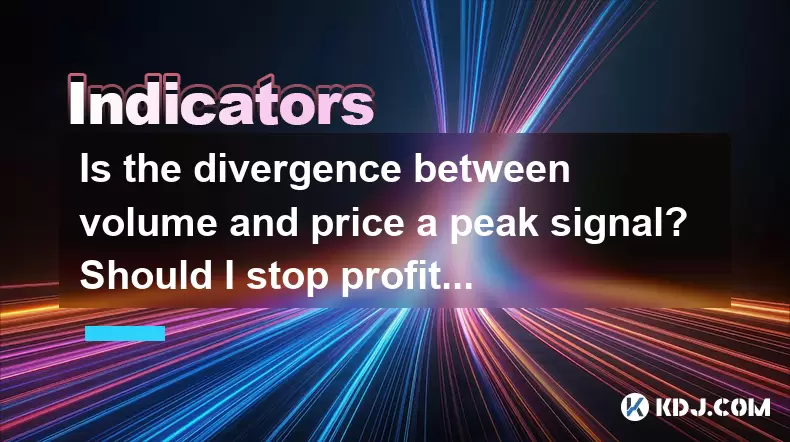
Is the divergence between volume and price a peak signal? Should I stop profit or hold?
May 29,2025 at 04:43am
Is the divergence between volume and price a peak signal? Should I stop profit or hold? In the world of cryptocurrencies, traders often look for signals that can indicate potential peaks or troughs in market trends. One such signal that traders frequently monitor is the divergence between volume and price. This phenomenon occurs when the trading volume ...
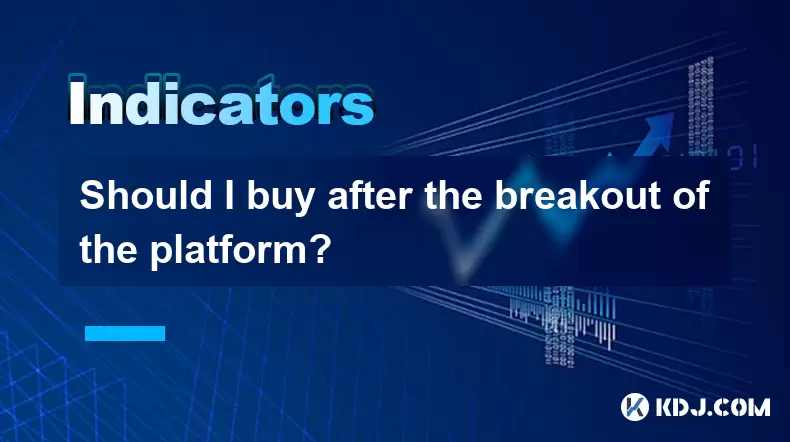
Should I buy after the breakout of the platform?
May 29,2025 at 04:35am
Understanding Breakouts in CryptocurrencyBreakouts in the cryptocurrency market occur when the price of a digital asset moves above a defined resistance level or below a support level, often leading to increased volatility and trading activity. A breakout can signal the start of a new trend, either bullish or bearish, depending on the direction of the p...
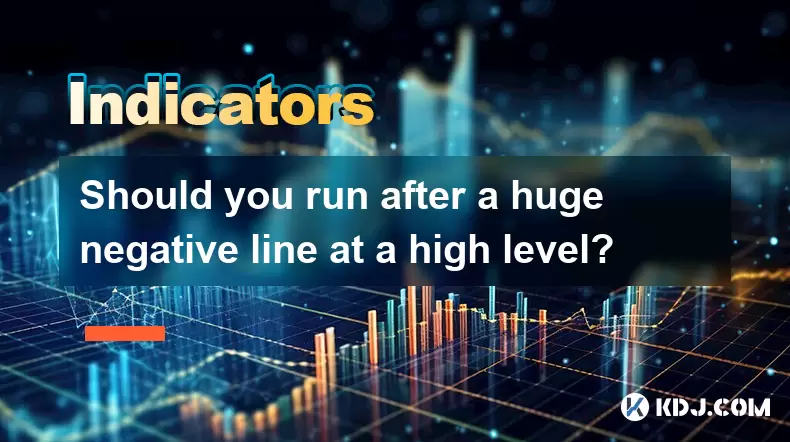
Should you run after a huge negative line at a high level?
May 29,2025 at 04:21am
Should you run after a huge negative line at a high level? When navigating the volatile world of cryptocurrencies, one of the most challenging decisions traders face is whether to chase a significant price drop after a high. A huge negative line at a high level often signals a sharp reversal in market sentiment, and understanding how to react to such mo...
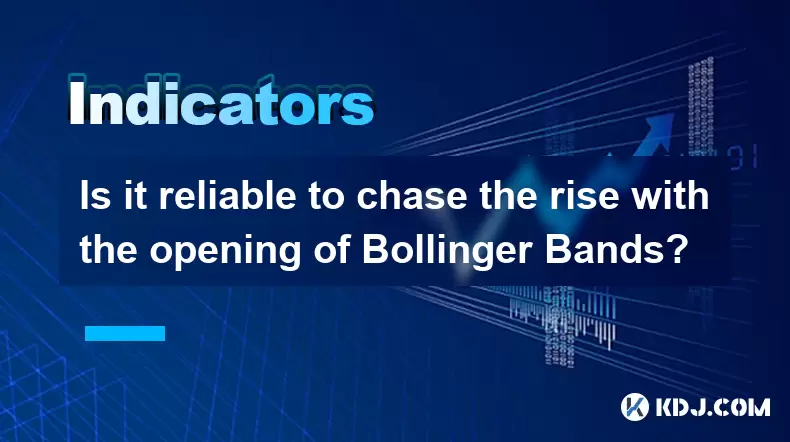
Is it reliable to chase the rise with the opening of Bollinger Bands?
May 29,2025 at 06:21am
Introduction to Bollinger BandsBollinger Bands are a technical analysis tool developed by John Bollinger. They consist of a middle band being a simple moving average (SMA) and two outer bands that are standard deviations away from the middle band. The standard setting for Bollinger Bands is a 20-day SMA with the outer bands set two standard deviations a...
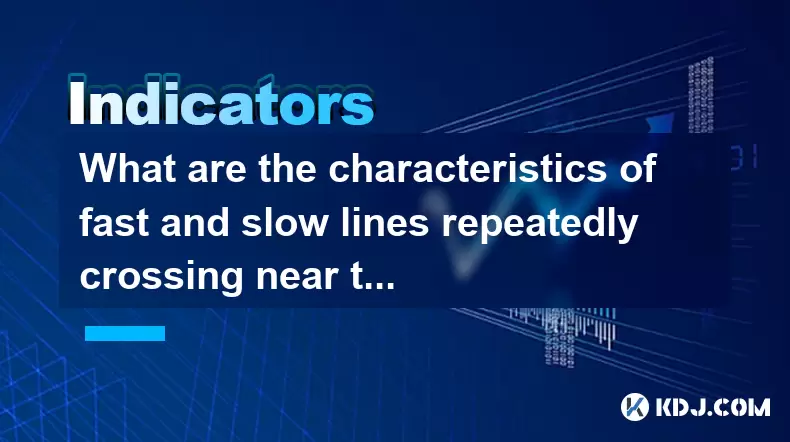
What are the characteristics of fast and slow lines repeatedly crossing near the zero axis? How to identify the breakthrough signal?
May 29,2025 at 06:49am
The concept of fast and slow lines crossing near the zero axis is commonly discussed in the context of technical analysis within the cryptocurrency market, particularly when using the Moving Average Convergence Divergence (MACD) indicator. Understanding the characteristics of these crossings and identifying breakthrough signals can be crucial for trader...
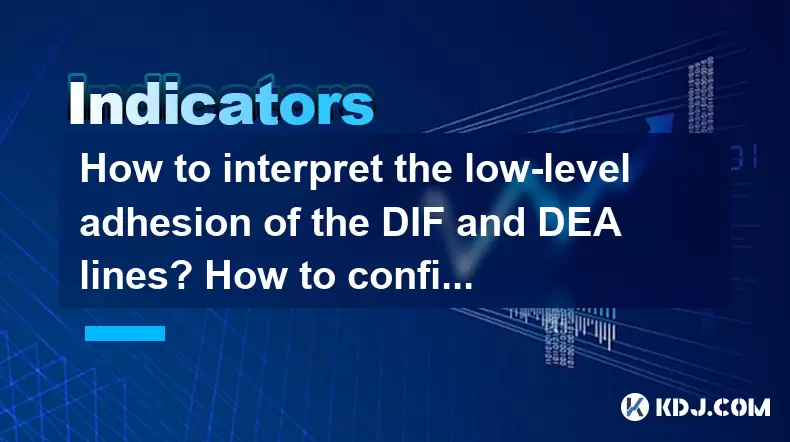
How to interpret the low-level adhesion of the DIF and DEA lines? How to confirm the direction selection signal?
May 29,2025 at 02:49am
Understanding the low-level adhesion of the DIF and DEA lines in the context of cryptocurrency trading involves delving into the specifics of the Moving Average Convergence Divergence (MACD) indicator. The MACD is a trend-following momentum indicator that shows the relationship between two moving averages of a cryptocurrency's price. The DIF line, also ...

Is the divergence between volume and price a peak signal? Should I stop profit or hold?
May 29,2025 at 04:43am
Is the divergence between volume and price a peak signal? Should I stop profit or hold? In the world of cryptocurrencies, traders often look for signals that can indicate potential peaks or troughs in market trends. One such signal that traders frequently monitor is the divergence between volume and price. This phenomenon occurs when the trading volume ...

Should I buy after the breakout of the platform?
May 29,2025 at 04:35am
Understanding Breakouts in CryptocurrencyBreakouts in the cryptocurrency market occur when the price of a digital asset moves above a defined resistance level or below a support level, often leading to increased volatility and trading activity. A breakout can signal the start of a new trend, either bullish or bearish, depending on the direction of the p...

Should you run after a huge negative line at a high level?
May 29,2025 at 04:21am
Should you run after a huge negative line at a high level? When navigating the volatile world of cryptocurrencies, one of the most challenging decisions traders face is whether to chase a significant price drop after a high. A huge negative line at a high level often signals a sharp reversal in market sentiment, and understanding how to react to such mo...

Is it reliable to chase the rise with the opening of Bollinger Bands?
May 29,2025 at 06:21am
Introduction to Bollinger BandsBollinger Bands are a technical analysis tool developed by John Bollinger. They consist of a middle band being a simple moving average (SMA) and two outer bands that are standard deviations away from the middle band. The standard setting for Bollinger Bands is a 20-day SMA with the outer bands set two standard deviations a...

What are the characteristics of fast and slow lines repeatedly crossing near the zero axis? How to identify the breakthrough signal?
May 29,2025 at 06:49am
The concept of fast and slow lines crossing near the zero axis is commonly discussed in the context of technical analysis within the cryptocurrency market, particularly when using the Moving Average Convergence Divergence (MACD) indicator. Understanding the characteristics of these crossings and identifying breakthrough signals can be crucial for trader...

How to interpret the low-level adhesion of the DIF and DEA lines? How to confirm the direction selection signal?
May 29,2025 at 02:49am
Understanding the low-level adhesion of the DIF and DEA lines in the context of cryptocurrency trading involves delving into the specifics of the Moving Average Convergence Divergence (MACD) indicator. The MACD is a trend-following momentum indicator that shows the relationship between two moving averages of a cryptocurrency's price. The DIF line, also ...
See all articles





















